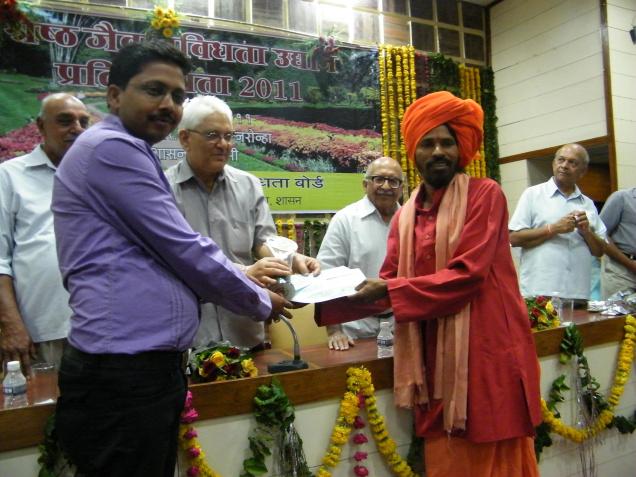 A farm whether in one acre or a few acres must encompass as many crop varieties as possible and also some animals to be remunerative.
A farm whether in one acre or a few acres must encompass as many crop varieties as possible and also some animals to be remunerative.
“Monocropping (growing only one crop) is now a fading practice among several farmers since they are realising that for their economic safety and better returns it is important to grow additional crops.
“In some areas in Madhya Pradesh farmers grow a main crop in a major area and other short term vegetable crops in smaller areas. Others equally divide the fields and grow different varieties. Some like Mr. Chander Singh having four acres along with regular crops like maize and soya also grow mangoes and trees like teak,” says Dr. I.S. Tomar, Programme Coordinator, Krishi Vigyan Kendra, Jabhua, Madhya Pradesh.
Proper guidance
Mr. Chander Singh had approached the Jabhua KVK in his region for proper guidance. The farmer wanted to know ways to make his four acre productive and profitable. Today, thanks to the institute’s intervention, Mr. Singh is well known in the region for getting a bumper harvest in ginger.
“I was advised to try growing ginger initially in my two acres acres .The KVK guided me on ways to ready the fields, labour, seeds and other inputs. I spent Rs. 50,000 for all the work and harvested the crop in six to seven months. I earned a net profit of Rs. 2.80 lakhs from selling the fresh rizhomes in the local market.
“The KVK staff also advised me to store some of the rhizomes to be sold later as dry ginger when prices rise, since dry ginger has got a good export market. I did so accordingly and benefited,” says the farmer.
The farmer is also growing mallika, aamrapali, keshar, and neelam mango varieties in two acres. Vegetables like onion, cauliflower, cabbage, chilli etc are grown as intercrops in the orchard.
“For orchards especially, it takes a minimum of 4-5 years for the trees to start bearing fruits so in the meantime it is remunerative to grow some short term vegetables as intercrops for generating income,” says Mr. Singh.
Annual income
Today the farmer is able to earn more than a Rs. one lakh a year from the intercrops and about Rs two lakhs from his mangoes every alternate year.
The farmer planted teak trees in three rows on the border of his four acre field. The trees act as wind breakers and protect the crops against heat waves and stormy winds. Under the shade of the teak trees he grows cucurbit crops.
The trees, apart from providing shade, provide revenue after some years when they can be cut for wood.
Space utilisation
“The speciality about the farmer is that not even a small space in his field is left free. Crops are practically grown in all the available space to generate income. Before the intervention the farmer’s annual income was not consistent, sometimes he used the leave his fields fallow too,” says Dr. Tomar.
The Indian Council of Agricultural Research, (ICAR), New Delhi invited Mr. Singh for a national seminar where he was asked to speak about his experiences to scientists and farmers who had come from different states.
The Madhya Pradesh State Biodiversity Board, Bhopal conferred on him the “Best Biodiversity Horticulturist” award in 2011. The best progressive farmer award in the district was also conferred on him by the Government.
“The role of KVKs is to work with the farmer and guide him. We might introduce new technologies developed in the University, but the attitude for trying them out should come from the farmer. And Mr. Singh readily accepted to try it out.
“A farmer is considered successful only if he has been able to earn good money from his crops. And getting a good income depends on the market and the quality of the harvested produce. Mr. Singh dedicatedly followed our guidance and has been able to reap a good income,” says Dr. Tomar.
Previous record
Mr. Singh had earlier harvested about 2.9 tonnes of maize and 0.4 tonnes of soybean from a hectare and 150 papaya fruits per plant from 100 plants when the average production in district was 1,497 kg/ha for maize and 720 kg/ha for soybean.

